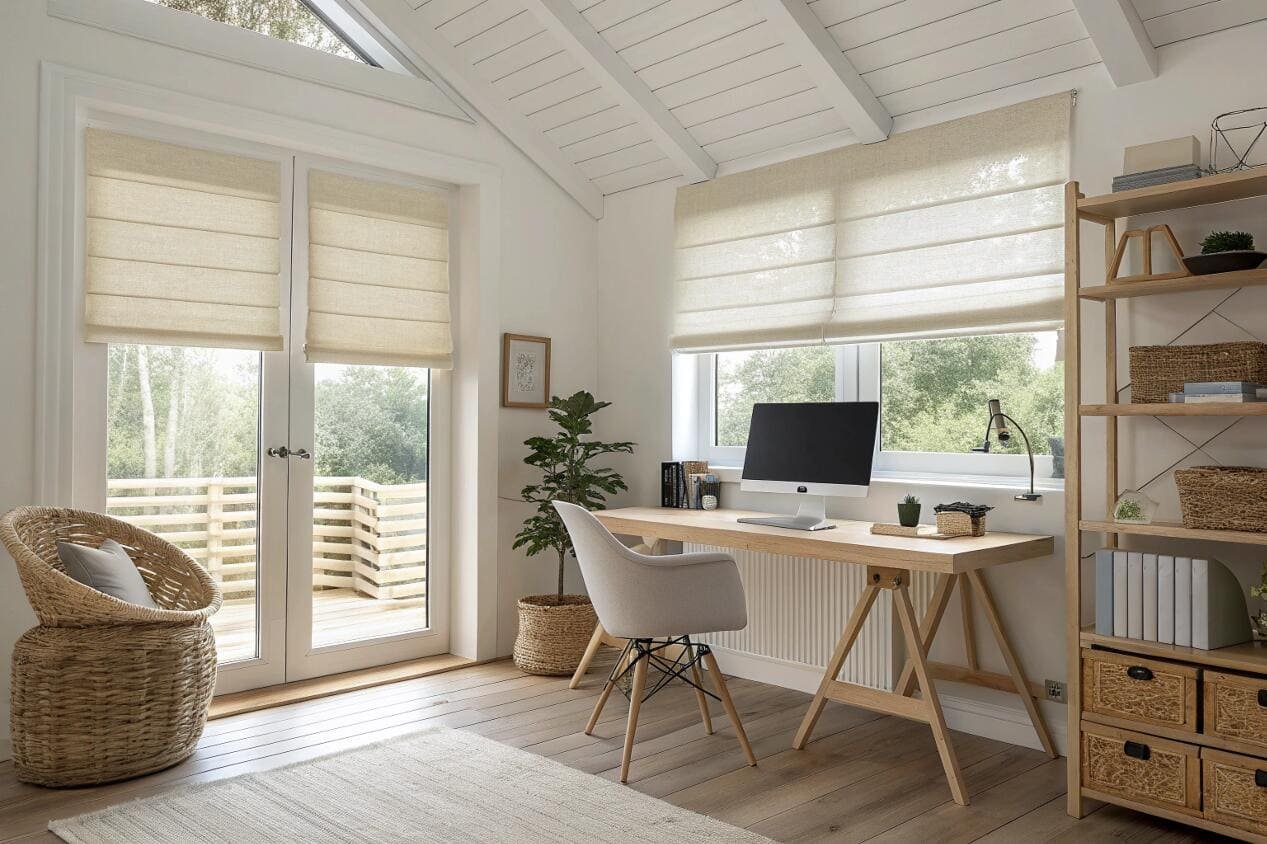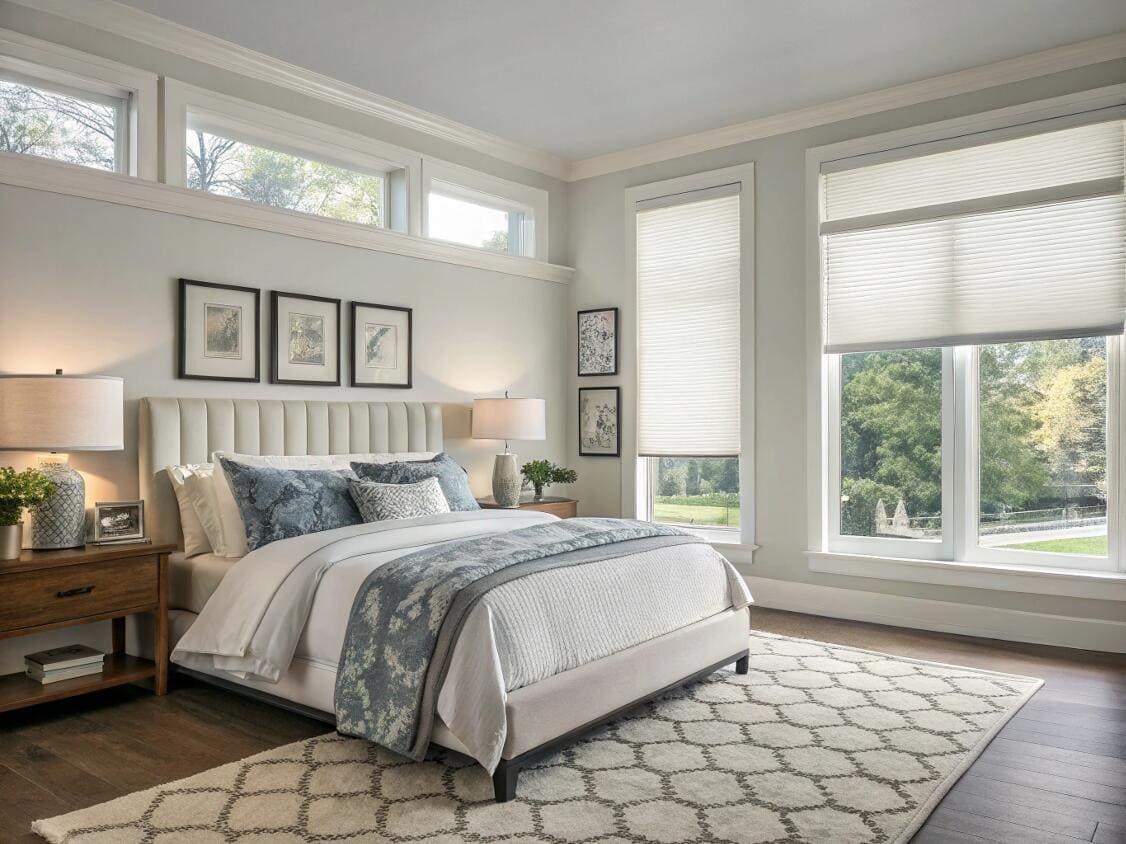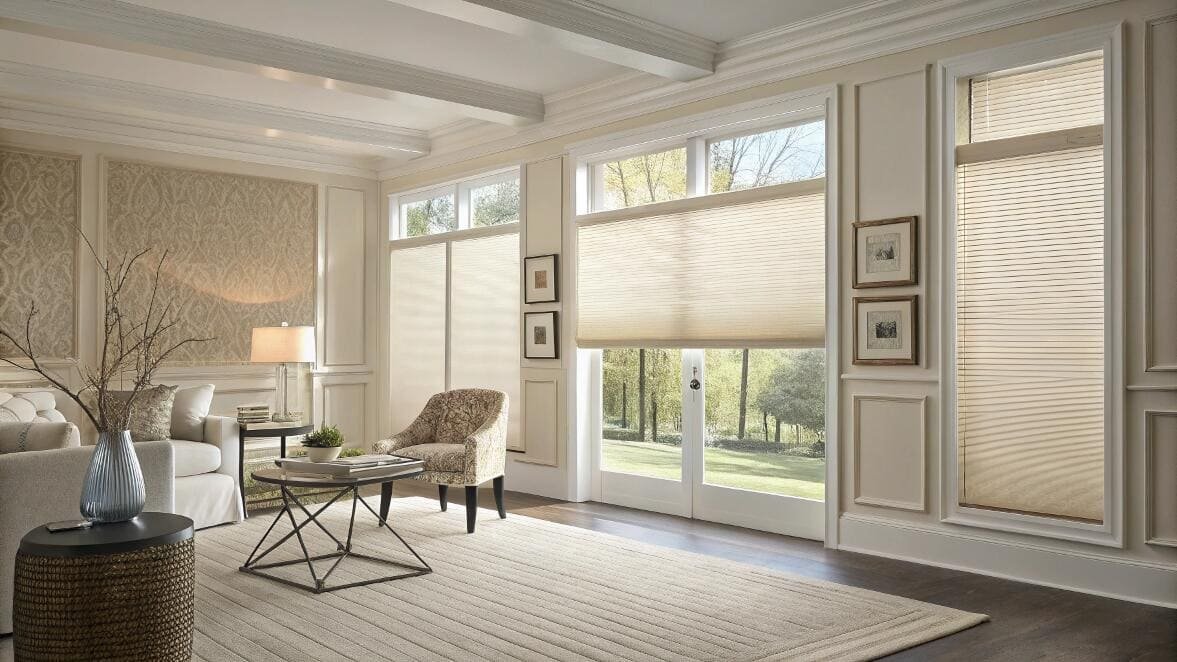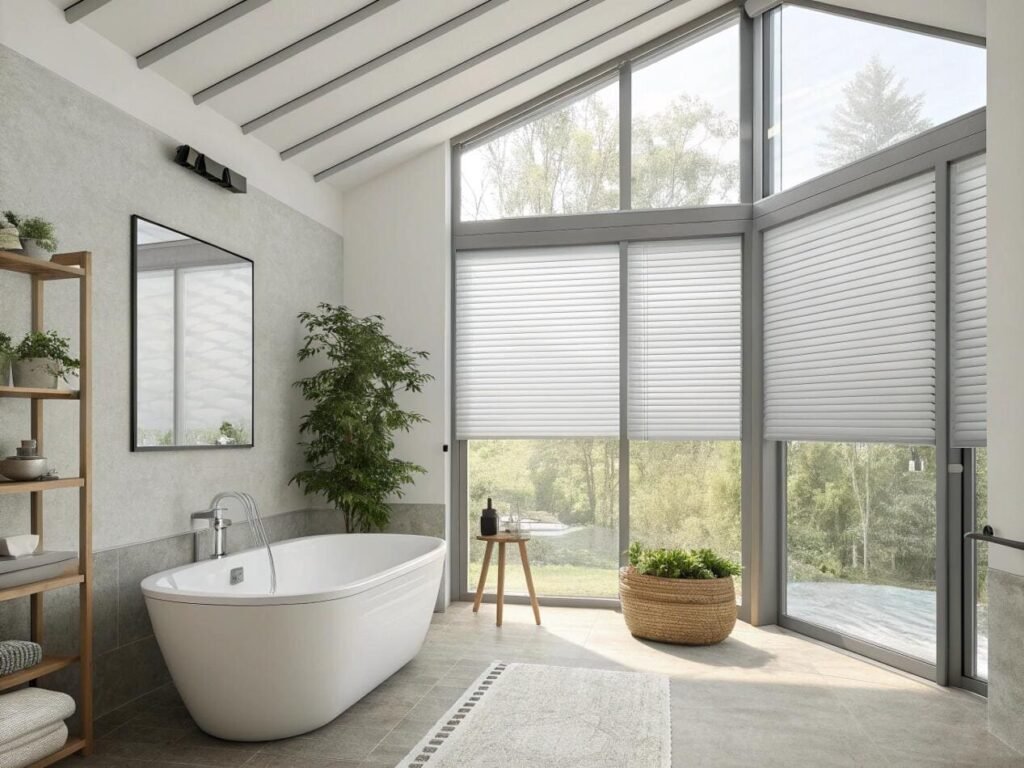You need a window treatment that offers privacy, but your client doesn't want to live in a dark cave. Traditional blinds are an all-or-nothing choice, forcing you to sacrifice natural light for a little bit of privacy.
Top-down bottom-up blinds[^1] are an advanced window covering[^2] with two independently moving rails. This allows you to lower the shade from the top, raise it from the bottom, or position it anywhere in between for total control over light and privacy.

For project managers like Emma, who are constantly balancing client demands for both aesthetics and function[^3], this style of blind is an incredibly powerful tool. It directly solves the most common dilemma in window coverings: the battle between wanting an open, airy room and needing to block the outside world from looking in. Think of it not just as a blind, but as a dynamic light-filtering system[^4] that adapts to your client's exact needs throughout the day. It’s a simple concept, but it fundamentally changes how a window can be used.
How do they offer both privacy and natural light?
The street-facing living room is a classic problem. Your client wants to feel safe from prying eyes but hates the thought of shutting the blinds and blocking out all the beautiful afternoon sun.
They provide superior privacy by allowing you to cover the bottom portion of the window to block sightlines from the street, while leaving the top portion completely open to let in natural daylight.
[^5].](https://velablinds.com/wp-content/uploads/2025/08/2-40.jpg)
This unique functionality makes them a game-changer. With a standard blind, your only option for privacy is to lower it all the way, plunging the room into darkness and creating a closed-off feeling. Top-down bottom-up systems completely decouple privacy from light control. You can place the blind precisely where you need it. If you have neighbors close by, you can raise the bottom rail just enough to block their view into your home while still enjoying the sunlight and a view of the sky. This ability to create a "privacy band" exactly where it’s needed is what makes them so much more functional than their traditional counterparts. At VelaBlinds, we see this as an essential feature for modern urban living, where homes are closer together than ever.
Why are they better than traditional blinds?
You've always specified standard roller shades or Venetian blinds[^6]. They work, but you know their limitations. You're either fully open, fully closed, or you're tilting slats in a way that never feels quite right.
Top-down bottom-up blinds are superior because they offer the light control of a roller shade and the privacy of a cafe curtain in one single, clean product. This unmatched flexibility is simply not possible with traditional blinds.

To really understand their value, let's compare them to the standard options. When I talk about the "three types of blinds" with clients, I frame it in terms of control.
| Window Covering | Light Control | Privacy Control | Key Limitation |
|---|---|---|---|
| Standard Roller Shade | Simple vertical control (up/down). Good for blocking light. | All or nothing. To get privacy, you must block the entire window. | Inflexible. Cannot have privacy and natural light simultaneously. |
| Venetian Blinds | Good; allows for tilting slats to redirect light. | Good; slats can be angled. | Visually busy. The stack of slats obstructs the view even when open, and they can be difficult to clean. |
| Top-Down Bottom-Up | The best of all worlds. Can be positioned anywhere. | Unmatched. Can cover any specific portion of the window as needed. | Generally comes in cellular or fabric styles, which is a specific aesthetic choice. |
This table shows why top-down bottom-up isn't just another option; it's an evolution. It takes the best qualities of other systems and combines them into one elegant, highly functional solution.
Which rooms are best for top-down bottom-up blinds?
You see the benefits, but now you need to know where to deploy this solution for maximum impact. Which rooms in a residential or commercial project will benefit the most from this unique functionality?
They are ideal for rooms where the need for privacy and natural light are in constant conflict, such as ground-floor living rooms, bathrooms, home offices, and any window facing a street or neighbor.

I always recommend these for specific problem-solving scenarios where traditional blinds would force a compromise.
- Bathrooms: This is the killer application. You can cover the bottom two-thirds of the window for complete privacy while still allowing daylight to stream in from the top. This keeps the space bright and airy without making the user feel exposed.
- Street-Level Bedrooms & Living Rooms: Block the view from pedestrians on the sidewalk without having to sacrifice all of your natural light. You can enjoy a bright room during the day without feeling like you're in a fishbowl.
- Home Offices: Position the shade to specifically block that annoying afternoon sun glare on your computer screen. You don't have to close the blinds entirely; just lower the top rail a foot or two to eliminate the glare while keeping the room lit.
- Windows with a View: If a window has a beautiful view of treetops or the sky but an unsightly view of a neighbor's wall at the bottom, you can raise the bottom rail to perfectly frame the view you want to see.
How do they work, and are they easy to install?
You're intrigued by the function, but you're worried about complexity. A system that moves in two directions sounds like it could have a complicated, failure-prone mechanism and be a headache to install.
They work with a simple dual-control system, often with handles on each moving rail for cordless operation. Installation is nearly identical to a standard blind—you just mount two brackets and click the headrail into place.

The engineering behind these blinds is actually very straightforward and reliable. The headrail at the top of the window holds the entire blind. The "bottom-up" function works like any standard blind, where a cord mechanism or cordless spring lifts the bottom rail. The "top-down" function is enabled by a second set of cords that pass through the blind material and suspend the top moving rail. In modern cordless versions, you simply use a handle on each rail to push or pull it into the desired position.
Installation is a breeze and will feel very familiar. The process is simply:
- Measure the window to ensure a proper fit.
- Use a level and pencil to mark the position for the two mounting brackets inside the window frame.
- Screw the brackets into place.
- Lift the entire blind assembly and click the fixed headrail securely into the brackets.
The blind is pre-tensioned and ready to operate right out of the box. At VelaBlinds, we also offer motorized options that make the operation even more effortless.
What materials and styles are available?
Functionality is key, but the project has a specific design aesthetic. You need to know if this highly functional blind is available in materials and colors that will complement your client's interior design.
Top-down bottom-up blinds are most famously available as cellular shades, which offer insulation, but also come in elegant Roman shades[^7] and natural woven wood styles to fit any decor.

While the mechanism is clever, the aesthetic is just as important. Luckily, this functionality is available in some of the most popular and stylish window covering materials. This ensures you never have to sacrifice style for function.
| Material Style | Best For... | Aesthetic and Benefits |
|---|---|---|
| Cellular (Honeycomb) | Maximum versatility and energy efficiency. This is the most popular choice. | Clean and modern. The honeycomb cells trap air, providing excellent insulation to help reduce energy bills. Available in sheer, light-filtering, and blackout opacities. |
| Roman Shades | Living rooms, dining rooms, and bedrooms where a softer, more luxurious look is desired. | Elegant and classic. The fabric cascades into soft, neat folds when raised, adding a touch of tailored sophistication to a room. |
| Woven Wood Shades | Creating a natural, organic, or bohemian feel. | Rich in texture. Made from natural materials like bamboo, reeds, and grasses, they filter light beautifully and add a warm, earthy element to the decor. |
This variety means you can get the exact level of light control and privacy your project needs without compromising on the interior design palette, whether it's minimalist and modern or plush and traditional.
Conclusion
Top-down bottom-up blinds are the ultimate problem-solvers. They offer an unmatched level of control over both privacy and natural light, making them a superior and highly flexible choice for almost any modern project.
---
[^1]: Explore the advantages of these innovative blinds that provide both privacy and natural light control.
[^2]: Learn about various window covering options to find the best fit for your needs.
[^3]: Discover how to achieve both style and practicality in your window covering choices.
[^4]: Understand how light-filtering systems work to improve your home's ambiance.
[^5]: Learn about moisture-resistant options for areas like bathrooms and kitchens.
[^6]: Explore the current trends and effectiveness of Venetian blinds in modern homes.
[^7]: Discover the unique features and benefits of Roman shades for your decor.Partner with VelaBlinds for Your Next Project
Smart window treatments shouldn't be complicated. After working with 500+ distributors and contractors worldwide, I've streamlined the process to get you quality products, competitive pricing, and reliable support - every time.
Why project professionals choose VelaBlinds:
- ✅ Fast, Accurate Quotes - Detailed specs and pricing within 24 hours
- ✅ Transparent Pricing - No hidden fees, volume discounts clearly outlined
- ✅ Quality Assurance - Direct partnerships with certified OEM manufacturers
- ✅ Project Support - Dedicated account manager from quote to delivery
Start your next project:
📧 Quick Quote: Send your requirements to info@velablinds.com
📱 Direct Contact: WhatsApp +86 137 2012 8317
🌐 Browse Solutions: https://velablinds.com/
📁 Product Resources: Access spec sheets, catalogs & project files
Paul Chen, Founder
"I built VelaBlinds to solve the real challenges I faced as a project buyer - long lead times, unclear specs, and unreliable suppliers. Let's discuss how we can power your projects with smarter blinds."
Serving distributors and contractors across North America, Europe, and Australia since 2018.




